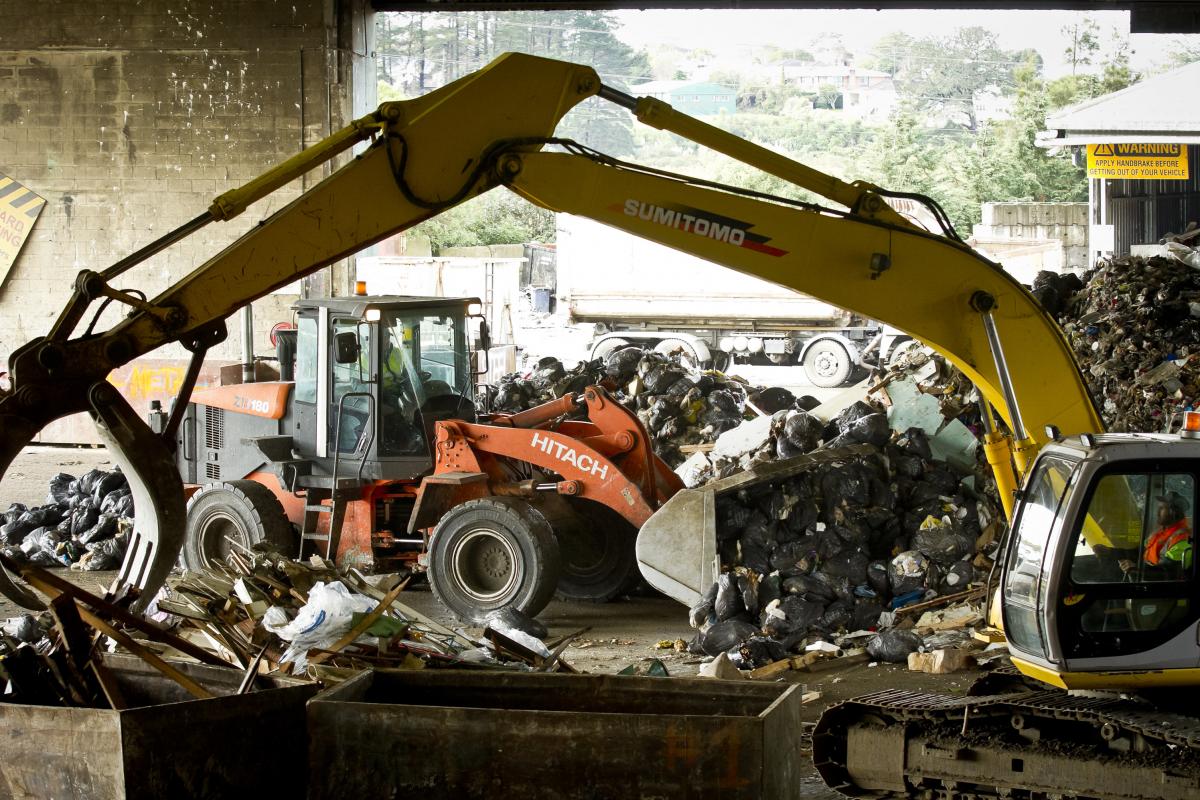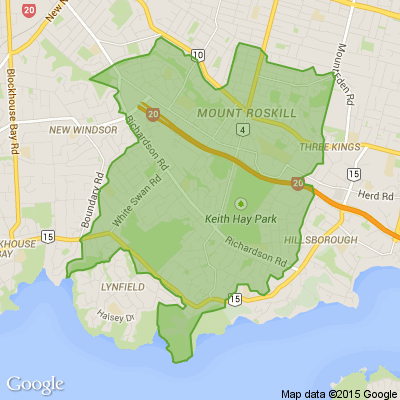New opening hours
Due to COVID there has been a change in the Waitākere Refuse and Recycling Transfer Station's operating hours. We will now be open from Mon to Sat, 8am – 5pm (Sunday - CLOSED).
To ensure you don’t miss out on a truly sublime waste experience, please plan ahead.

Here comes the hot weather: Parts of New Zealand due to push past 30C this week
Kiwis are in for an early dose of scorching summer heat later this week - with temperatures pushing past 30C in parts of the country.
MetService is forecasting highs of 28C, 31C and 29C for Napier, Hastings and Gisborne respectively on Thursday.
“That’s well above average for this time of year – but we’re of course knocking on the door of summer,” MetService meteorologist Mmathapelo Makgabutlane said.
That warmth will be felt in most regions: Auckland, Hamilton, Tauranga and Whangārei are likely to experience highs in the early to mid-20s over the remainder of the week.
Further south tomorrow, the mercury is likely to rise as high as 27C in Christchurch – well past its November average of 19C – while Timaru is in for a toasty maximum of 26C.
“Those day-time temperatures are certainly on the warm side, but some of the overnight temperatures also don’t dip too low,” Makgabutlane said.
Aucklanders were in for balmy lows of 16C and 17C over the next few nights, with high humidity likely to hamper sleep across the city.
“But even parts of Southland have minimum temperatures in the mid-teens, which is fairly warm.”
Makgabutlane said the heat was coming with a ridge of high pressure meeting a northwesterly air flow – drawing warm, moist air over New Zealand.
On Thursday, a frontal system was also forecast to begin bringing rain and wind to the South Island, with the wettest weather expected in the west.
But little of that was likely to reach parched northeastern areas like Hawke’s Bay.
“If we’re lucky, there may be a little bit of rain from that, but there’s nothing substantial on the cards.”
The dry and hot conditions are already fuelling concern about fire danger in the region, months away from the peak of summer.
Fire and Emergency New Zealand Hawke’s Bay district manager Glen Varcoe confirmed fire-risk indices were late last week elevated to high across the Ahuriri and Heretaunga districts, including Napier and Hastings and coastal regions north to Wairoa.
Last Thursday, police said both fire safety officers and police had been investigating five bush and scrub fires in Northern Hawke’s Bay, in some cases suspected deliberately lit.
Niwa reports temperatures are likely to be warmer than average through to January, with frequent northwesterly winds leading to more days above 25C.
Also raising the odds for hot summer weather was the potential for marine heatwave conditions – already occurring in seas to the east of New Zealand – to expand and intensify.
==============================================
Breaking the Cycle of Taha Tinana (Physical Cravings) - Day 11
Breaking the Cycle of Taha Tinana (Physical Cravings)
In te ao Māori (the Māori worldview), humans are seen as beings of both taha tinana (the physical realm) and taha wairua (the spiritual realm). A balance between these aspects is essential for well-being. When we focus solely on satisfying our physical cravings—kai (food), moe (rest), hiahia (desires), and mataku (fear)—we risk losing our connection to wairuatanga (spirituality) and mauri (life force).
The Story of Tūmaro and the Sacred Rākau (Tree)
Once, a man named Tūmaro roamed the vast ngahere (forest) in search of a better life. He was tired, hungry, and filled with uncertainty about his future. As the sun blazed above him, he cried out to the atua (gods), seeking their guidance.
Hearing his plea, Tāne Mahuta, the atua of the forests, sent him a gift: a rākau manaaki (sacred tree) with the power to grant wishes. Exhausted, Tūmaro lay beneath the tree, and his first wish was for moe (rest). The tree immediately granted his desire, providing a cool shade, soft moss, and a gentle breeze that lulled him into a deep sleep.
When he awoke, his puku (stomach) growled with hunger. Without thinking, he wished for kai, and the tree responded with an abundance of delicious hākari (feast). He devoured it greedily, thanking no one for the gift.
Feeling satisfied, his mind wandered to hiahia (desire). Tūmaro wished for a companion to bring him pleasure and ease his loneliness. The tree granted this wish too, and soon he became absorbed in his desires, forgetting his original prayer to the atua.
As the day turned to night, Tūmaro became aware of the darkening ngahere and the distant calls of kēhua (spirits). Fear crept into his mind, and he thought, “What if a wild beast comes to attack me?” As soon as the thought arose, the sacred tree granted it—a kurī ngaro (ferocious beast) appeared and devoured him.
---
The Lesson of Tūmaro
The kaumātua (elders) who shared this story taught that Tūmaro’s downfall was not caused by the rākau manaaki but by his own lack of balance. By giving in entirely to taha tinana (physical cravings) without nurturing his taha wairua (spiritual self), he created a cycle that led to his destruction.
---
Values Reflected in the Story
1. Whanaungatanga (Connection): Tūmaro failed to acknowledge the atua and his connection to the world around him. Gratitude and mindfulness strengthen our relationships with others and with te taiao (the environment).
2. Wairuatanga (Spirituality): The story reminds us that taha wairua must be nurtured alongside taha tinana. Practices such as karakia (prayers) and aroha ki te Atua (love for the gods) maintain spiritual balance.
3. Manaakitanga (Respect and Care): Instead of respecting the sacred gift of the tree, Tūmaro became consumed by his personal desires, neglecting the importance of moderation and care.
4. Kaitiakitanga (Guardianship): The sacred tree symbolises the resources of Papatūānuku (Earth Mother), which must be used responsibly, with gratitude and care.
---
Moral of the Story
The story of Tūmaro teaches us that balance is the key to a fulfilling life. Pursuing the needs of taha tinana without acknowledging taha wairua leads to imbalance and harm. To thrive, we must practice gratitude, moderation, and mindfulness. As values remind us, nurturing our spiritual connection ensures harmony within ourselves, our whānau, and the wider world.
In Tūmaro’s story, the sacred rākau served not only as a gift but also as a reminder of the power of our intentions and the need to honor both physical and spiritual well-being.
Poll: Should all neighbours have to contribute to improvements?
An Auckland court has ruled a woman doesn’t have to contribute towards the cost of fixing a driveway she shares with 10 neighbours.
When thinking about fences, driveways or tree felling, for example, do you think all neighbours should have to pay if the improvements directly benefit them?

-
82.5% Yes
-
14.8% No
-
2.7% Other - I'll share below






 Loading…
Loading…














